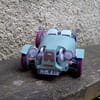Probleme windows linux
nugs
-
Utilisateur anonyme -
Utilisateur anonyme -
Bonjour,
j'ai un pc bipartite xp-linux, et en faisant ma mise a jour linux, j'ai perdu mon acces a xp. quand j'allumais mon pc j'avais le choix entre ubuntu et xp maintenant je l'ai plus. je voudrais remettre l'ancienne configuration de mon systeme ( avant les mises a jours) ou enlever linux.
merci
j'ai un pc bipartite xp-linux, et en faisant ma mise a jour linux, j'ai perdu mon acces a xp. quand j'allumais mon pc j'avais le choix entre ubuntu et xp maintenant je l'ai plus. je voudrais remettre l'ancienne configuration de mon systeme ( avant les mises a jours) ou enlever linux.
merci
A voir également:
- Probleme windows linux
- Clé d'activation windows 10 - Guide
- Problème démarrage windows 10 - Guide
- Montage video gratuit windows - Guide
- Windows movie maker - Télécharger - Montage & Édition
- Restauration systeme windows 10 - Guide
38 réponses
alors je vais te marquer ce que j'ai trouvé :
partition 1 (windows )
espace libre
partition 3 ( commun )
partition du fichier d'echanges
espace libre
partition 5 (linux)
partition du fichier d'échange
espace libre
j'ai trouve ca dans le gestionnaire de disque je te le confirme dans 2 minutes
partition 1 (windows )
espace libre
partition 3 ( commun )
partition du fichier d'echanges
espace libre
partition 5 (linux)
partition du fichier d'échange
espace libre
j'ai trouve ca dans le gestionnaire de disque je te le confirme dans 2 minutes
je suis allé verifier c'est bien ca
je sais pas pour quoi c'est pas Un deux trois, mais c'est un trois cinq
je sais pas pour quoi c'est pas Un deux trois, mais c'est un trois cinq

alors, dans la feuille place toi aprés ## ## End Default Options ## et rajoutes :
title Microsoft Windows XP home edition
root (hd0,0)
savedefault
makeactive
chainloader +1
de facon a ce que tu obtiennes ceci :
## ## End Default Options ##
title Microsoft Windows XP
root (hd0,0)
savedefault
makeactive
chainloader +1
title Ubuntu, kernel 2.6.15-52-386
root (hd0,2)
kernel /boot/vmlinuz-2.6.15-52-386 root=/dev/hda3 ro quiet splash
initrd /boot/initrd.img-2.6.15-52-386
savedefault
boot
title Ubuntu, kernel 2.6.15-52-386 (recovery mode)
root (hd0,2)
kernel /boot/vmlinuz-2.6.15-52-386 root=/dev/hda3 ro single
initrd /boot/initrd.img-2.6.15-52-386
boot
title Ubuntu, kernel 2.6.15-51-386
root (hd0,2)
kernel /boot/vmlinuz-2.6.15-51-386 root=/dev/hda3 ro quiet splash
initrd /boot/initrd.img-2.6.15-51-386
savedefault
boot
title Ubuntu, kernel 2.6.15-51-386 (recovery mode)
root (hd0,2)
kernel /boot/vmlinuz-2.6.15-51-386 root=/dev/hda3 ro single
initrd /boot/initrd.img-2.6.15-51-386
boot
title Ubuntu, kernel 2.6.15-29-386
root (hd0,2)
kernel /boot/vmlinuz-2.6.15-29-386 root=/dev/hda3 ro quiet splash
initrd /boot/initrd.img-2.6.15-29-386
savedefault
boot
title Ubuntu, kernel 2.6.15-29-386 (recovery mode)
root (hd0,2)
kernel /boot/vmlinuz-2.6.15-29-386 root=/dev/hda3 ro single
initrd /boot/initrd.img-2.6.15-29-386
boot
title Ubuntu, kernel 2.6.15-28-386
root (hd0,2)
kernel /boot/vmlinuz-2.6.15-28-386 root=/dev/hda3 ro quiet splash
initrd /boot/initrd.img-2.6.15-28-386
savedefault
boot
title Ubuntu, kernel 2.6.15-28-386 (recovery mode)
root (hd0,2)
kernel /boot/vmlinuz-2.6.15-28-386 root=/dev/hda3 ro single
initrd /boot/initrd.img-2.6.15-28-386
boot
title Ubuntu, kernel 2.6.12-10-386
root (hd0,2)
kernel /boot/vmlinuz-2.6.12-10-386 root=/dev/hda3 ro quiet splash
initrd /boot/initrd.img-2.6.12-10-386
savedefault
boot
title Ubuntu, kernel 2.6.12-10-386 (recovery mode)
root (hd0,2)
kernel /boot/vmlinuz-2.6.12-10-386 root=/dev/hda3 ro single
initrd /boot/initrd.img-2.6.12-10-386
boot
title Ubuntu, kernel 2.6.10-5-386
root (hd0,2)
kernel /boot/vmlinuz-2.6.10-5-386 root=/dev/hda3 ro quiet splash
initrd /boot/initrd.img-2.6.10-5-386
savedefault
boot
title Ubuntu, kernel 2.6.10-5-386 (recovery mode)
root (hd0,2)
kernel /boot/vmlinuz-2.6.10-5-386 root=/dev/hda3 ro single
initrd /boot/initrd.img-2.6.10-5-386
boot
title Ubuntu, memtest86+
root (hd0,2)
kernel /boot/memtest86+.bin
boot
ensuite fais enregistrer et redémares l'ordinateur. normalement tu dois avoir le choix entre Windows XP (en haut de la liste) et tout les chois Linux (juste en dessous)
title Microsoft Windows XP home edition
root (hd0,0)
savedefault
makeactive
chainloader +1
de facon a ce que tu obtiennes ceci :
## ## End Default Options ##
title Microsoft Windows XP
root (hd0,0)
savedefault
makeactive
chainloader +1
title Ubuntu, kernel 2.6.15-52-386
root (hd0,2)
kernel /boot/vmlinuz-2.6.15-52-386 root=/dev/hda3 ro quiet splash
initrd /boot/initrd.img-2.6.15-52-386
savedefault
boot
title Ubuntu, kernel 2.6.15-52-386 (recovery mode)
root (hd0,2)
kernel /boot/vmlinuz-2.6.15-52-386 root=/dev/hda3 ro single
initrd /boot/initrd.img-2.6.15-52-386
boot
title Ubuntu, kernel 2.6.15-51-386
root (hd0,2)
kernel /boot/vmlinuz-2.6.15-51-386 root=/dev/hda3 ro quiet splash
initrd /boot/initrd.img-2.6.15-51-386
savedefault
boot
title Ubuntu, kernel 2.6.15-51-386 (recovery mode)
root (hd0,2)
kernel /boot/vmlinuz-2.6.15-51-386 root=/dev/hda3 ro single
initrd /boot/initrd.img-2.6.15-51-386
boot
title Ubuntu, kernel 2.6.15-29-386
root (hd0,2)
kernel /boot/vmlinuz-2.6.15-29-386 root=/dev/hda3 ro quiet splash
initrd /boot/initrd.img-2.6.15-29-386
savedefault
boot
title Ubuntu, kernel 2.6.15-29-386 (recovery mode)
root (hd0,2)
kernel /boot/vmlinuz-2.6.15-29-386 root=/dev/hda3 ro single
initrd /boot/initrd.img-2.6.15-29-386
boot
title Ubuntu, kernel 2.6.15-28-386
root (hd0,2)
kernel /boot/vmlinuz-2.6.15-28-386 root=/dev/hda3 ro quiet splash
initrd /boot/initrd.img-2.6.15-28-386
savedefault
boot
title Ubuntu, kernel 2.6.15-28-386 (recovery mode)
root (hd0,2)
kernel /boot/vmlinuz-2.6.15-28-386 root=/dev/hda3 ro single
initrd /boot/initrd.img-2.6.15-28-386
boot
title Ubuntu, kernel 2.6.12-10-386
root (hd0,2)
kernel /boot/vmlinuz-2.6.12-10-386 root=/dev/hda3 ro quiet splash
initrd /boot/initrd.img-2.6.12-10-386
savedefault
boot
title Ubuntu, kernel 2.6.12-10-386 (recovery mode)
root (hd0,2)
kernel /boot/vmlinuz-2.6.12-10-386 root=/dev/hda3 ro single
initrd /boot/initrd.img-2.6.12-10-386
boot
title Ubuntu, kernel 2.6.10-5-386
root (hd0,2)
kernel /boot/vmlinuz-2.6.10-5-386 root=/dev/hda3 ro quiet splash
initrd /boot/initrd.img-2.6.10-5-386
savedefault
boot
title Ubuntu, kernel 2.6.10-5-386 (recovery mode)
root (hd0,2)
kernel /boot/vmlinuz-2.6.10-5-386 root=/dev/hda3 ro single
initrd /boot/initrd.img-2.6.10-5-386
boot
title Ubuntu, memtest86+
root (hd0,2)
kernel /boot/memtest86+.bin
boot
ensuite fais enregistrer et redémares l'ordinateur. normalement tu dois avoir le choix entre Windows XP (en haut de la liste) et tout les chois Linux (juste en dessous)
merci pour ta patience et ton aide. c'eatit chiant pour toi et en plus je sui s pas vraiment doué, donc MERCI beaucoup. je reviens te confirmer que tout marche
Vous n’avez pas trouvé la réponse que vous recherchez ?
Posez votre question
merci pour tout je suis sur windows et tout marche tres bien. vraiment merci de ta patience et de ton aide

bonjour,
dans un terminal tapes
fdisk -l
si la 1er partition est note ntfs
rajoute ses lignes avant fin de page
tle Windows xp
root (hd0,0)
makeactive
chainloader +1
ensuite tu redemarre et voit ce que cela donne
dans un terminal tapes
fdisk -l
si la 1er partition est note ntfs
rajoute ses lignes avant fin de page
tle Windows xp
root (hd0,0)
makeactive
chainloader +1
ensuite tu redemarre et voit ce que cela donne

